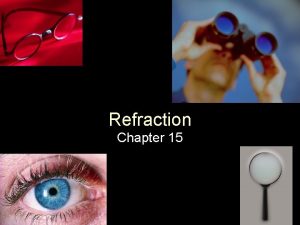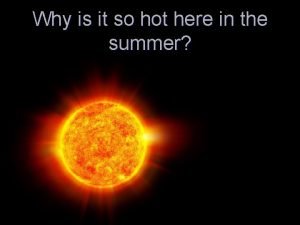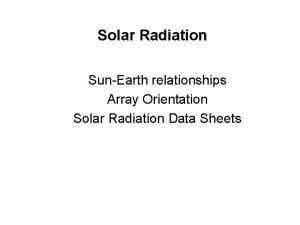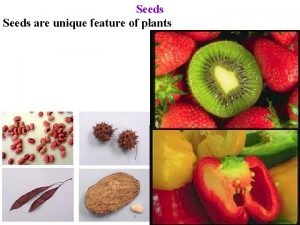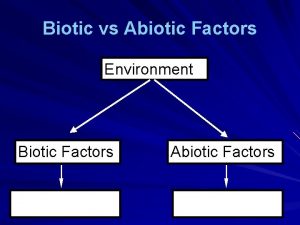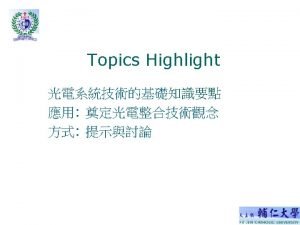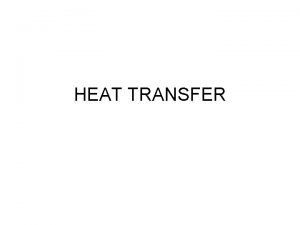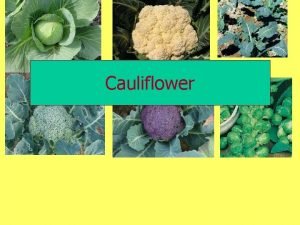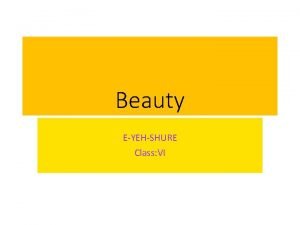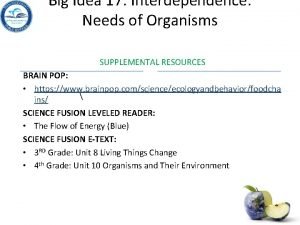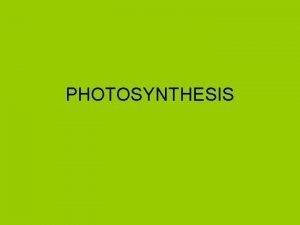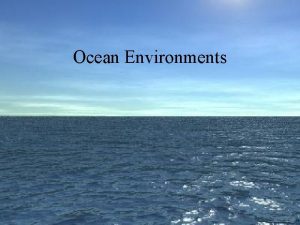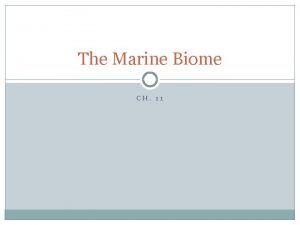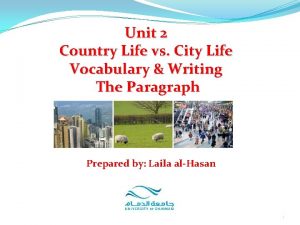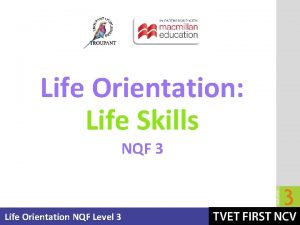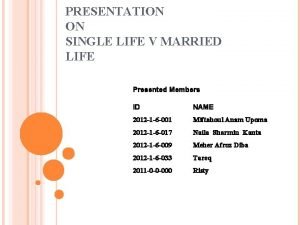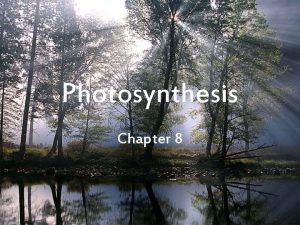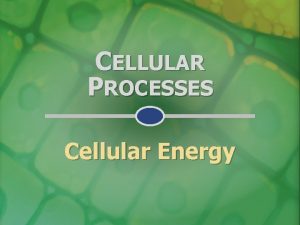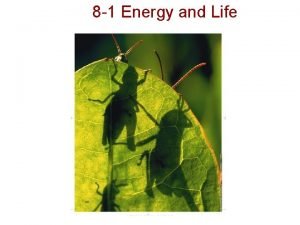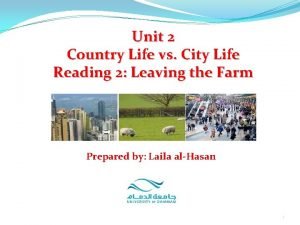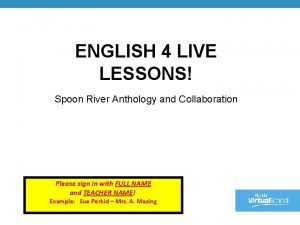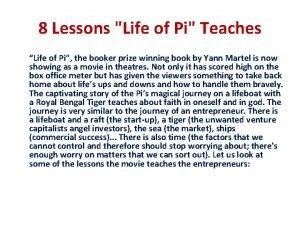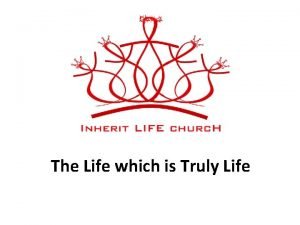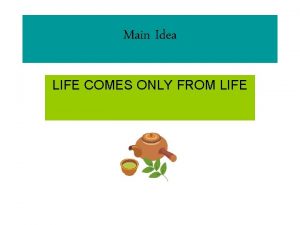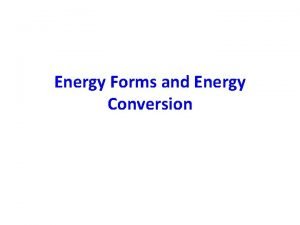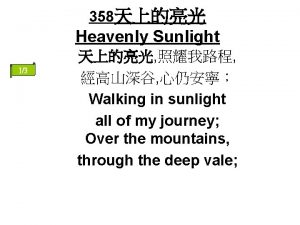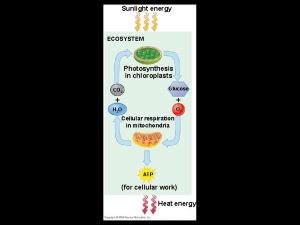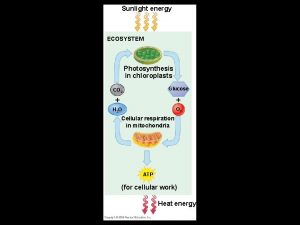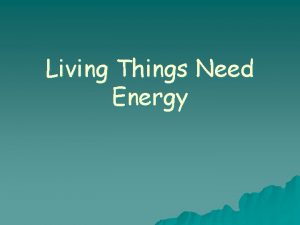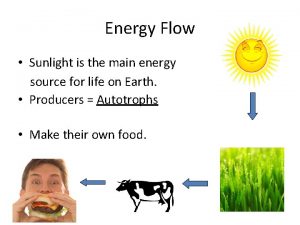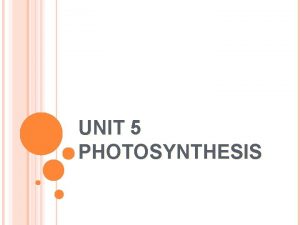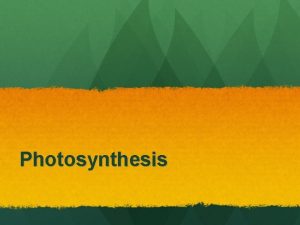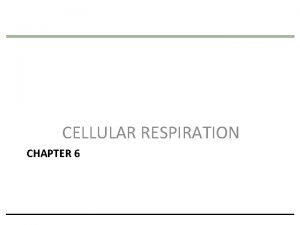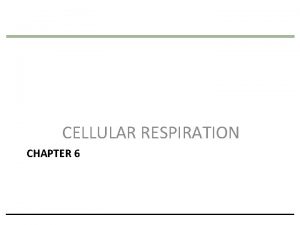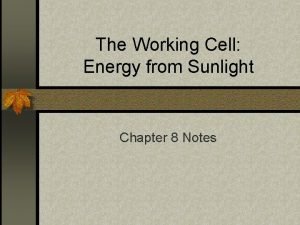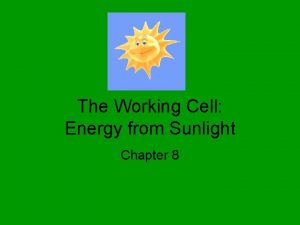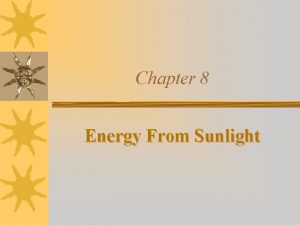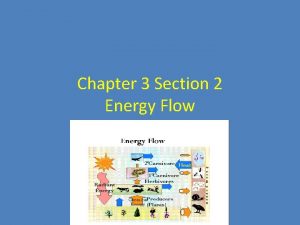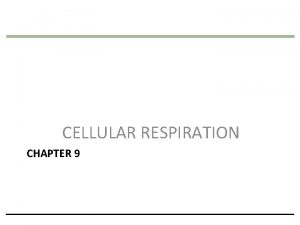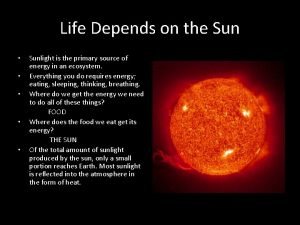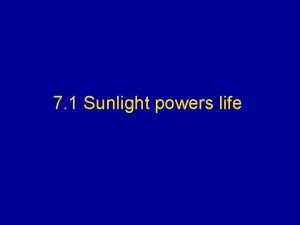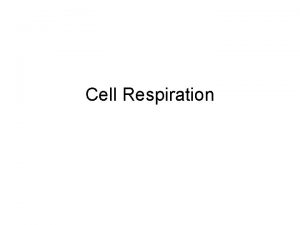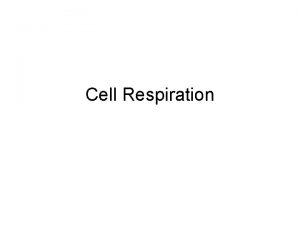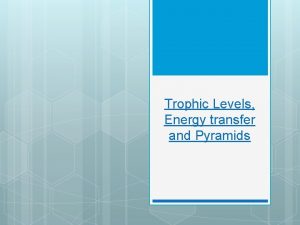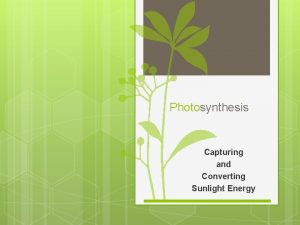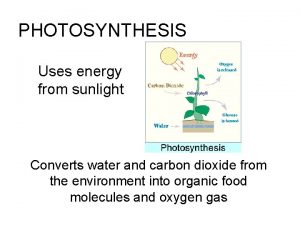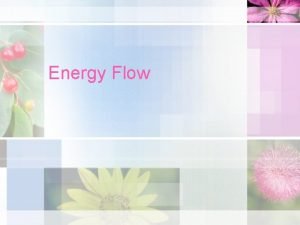Chapter 8 1 Energy and Life Energy Sunlight













































- Slides: 45

Chapter 8. 1: Energy and Life

Energy • Sunlight is the main energy source for life on Earth.

What is energy? Energy is the ability to do work!

Autotrophs (Producers) • Capture energy from sunlight or chemicals and use that energy to produce food. – Ex. Plants

Heterotrophs (Consumers) • Organisms that rely on other organisms for their energy and food supply. – Ex. Animals

Chemical Energy and ATP 1. Energy comes in many forms: a. Light b. Heat c. Chemical

1. Cells use chemical energy in the form of a chemical compound called ATP, or adenosine triphosphate. a. ATP contains: i. A 5 -carbon sugar called ribose ii. A nitrogenous base called adenine iii. Three phosphate groups b. The bonds between the phosphate groups store and release energy

c. ATP is like a rechargable battery. ADP ATP Energy Adenosine diphosphate (ADP) + Phosphate Partially charged battery Energy Adenosine triphosphate (ATP) Fully charged battery

Chemical Energy and ATP: Storing Energy • Energy is stored in ATP a. ADP, adenosine diphosphate, is similar to ATP but has two phosphate groups instead of three b. When a cell has energy available, it can store small amounts by adding a phosphate to ADP making ATP

Using the energy 1. When a chemical bond between the 2 nd and 3 rd phosphates of ATP is broken, energy is released

Chemical Energy and ATP: Releasing Energy 2. ATP has enough energy to power a variety of cellular activities A. active transport across the selectively permeable cell membrane Firefly B. protein synthesis C. muscle contractions D. Propels flagella E. Produces light in fireflies Escherichia coli bacterium with flagella

3. ATP is the basic energy source of all cells


• ATP is a good short term energy storage that is recycled between ADP and ATP. Cells have only a small amount of ATP. 1. It is more efficient for cells to store energy as glucose. 2. When cells need energy they make ATP from ADP using energy from glucose.

Chapter 8 -2 Photosynthesis: An Overview

What is photosynthesis? • The process in which plants use the energy of the sun to convert water and carbon dioxide into high-energy carbohydrates (sugars and starches) and oxygen (a waste product).

The Photosynthesis Equation • Plants obtain carbon dioxide from either the water or air they live in. • Photosynthesis occurs in chloroplasts. • The carbohydrates produced are 6 -carbon sugars (C 6 H 12 O 6). Chapter 8 B Stop at 45 sec

Light Energy Chloroplast CO 2 + H 2 O Sugars + O 2

Carbon dioxide + water + light sugars + oxygen CO 2 + H 2 O + light C 6 H 12 O 6 + O 2 What does this equation look like when balanced? 6 CO 2 + 6 H 2 O + light 1 C 6 H 12 O 6 + 6 O 2

Light and Pigments • Photosynthesis requires: – water – carbon dioxide – light – chlorophyll (a pigment molecule in chloroplasts; two types) • chlorophyll a • chlorophyll b

Photosynthesis Needs… …and Light CO 2 H 2 O

ROYGBIV • Sunlight is perceived as white light, but is really a mixture of different wavelengths of light (like a rainbow). The visible light we can see is a very small portion of the electromagnetic spectrum. • Red Orange Yellow Green Blue Indigo Violet Red: long Violet: Short wavelength, less energy wavelength, high energy

• Pigments are molecules that absorb light at different wavelengths. – Chlorophyll absorbs light in the visible spectrum, except the green wavelengths. – Green light is reflected by the leaves, so plants look green. • The high energy that is absorbed makes photosynthesis work.

Factors affecting photosynthesis – Shortage of water – Temperature (0 -35 degrees Celsius) – Intensity of light

C 6 H 12 O 6 … s ce du o pr Photosynthesis pro for energy. duc es… O 2 as a waste product.

Chapter 8 -3: The Reactions of Photosynthesis

Inside a Chloroplast • Photosynthesis takes place inside chloroplasts. • Chloroplasts contain: – thylakoids: saclike photosynthetic membranes containing pigments – grana (singular: granum): stacks of thylakoids – stroma: region of chloroplasts outside of the thylakoid membranes – inner membrane – outer membrane

Electron Carriers • • Sunlight excites electrons in chlorophyll, causing them to gain energy. An excited electron is like a hot coal, and cannot be easily carried from one place to another- a protein called an electron carrier is required to transport excited electrons.

Electron transport: An electron carrier molecule can accept a pair of high-energy electrons and transfer them to another molecule. – Electron transport chain: Series of electron carriers – Example: NADP+ (nicotinamide adenine dinucleotide phosphate) NADP+ + 2 electrons + H + NADPH • NADPH can carry high-energy electrons to other chemical reactions in the cell that need energy

Light Dependent Reactions • The light-dependent reaction splits water, produce oxygen gas as waste, and converts ADP and NADP+ into ATP and NADPH.

Light Dependent Reactions Photosystem II Hydrogen Ion Movement ATP synthase Inner Thylakoid Space Thylakoid Membrane Stroma

Light Dependent Reactions • Light hits Photosystem II in the thylakoid membranes. Two electrons are excited and these excited electrons are passed onto the electron transport chain – To replace the lost electrons, the thylakoid membrane obtains low-energy electrons by splitting water 2 H 2 O 4 H+ + O 2 + 2 e • • The O 2 is released as waste The hydrogen ions (4 H+) are released inside thylakoid membrane

Light Dependent Reactions • Electron transport chain (ETC) – – Electrons are passed from Photosystem II to Photosystem I from one electron carrier to the next until they reach Photosystem I Energy from the electrons is used by the electron carriers in the ETC to force H+ ions from the stroma into the inner thylakoid space- build up of H+ will be used to drive ATP synthase

Light Dependent Reactions • Light hits Photosystem I – – Pigments in Photosystem I use energy from light to energize two electrons, making them high-energy They are passed to NADP+ Reductasecatalyzes the reaction of NADP+ take combining with the high-energy electrons and hydrogen ions (H+) to become NADPH

Light Dependent Reactions • Hydrogen Ion Movement – The inside of the thylakoid membrane fills up with positively charged hydrogen ions (H+) as electrons are passed from Photosystem II to I ATP synthase – • • The thylakoid membrane contains a protein called ATP synthase that spans the membrane and allows H+ ions to pass through it As H+ ions pass through ATP synthase, the protein rotates and binds ADP and a phosphate group to produce ATP.

Light-independent reactions (The Calvin Cycle) • • During the Calvin cycle, plants use ATP and NADPH from the light-dependent reactions to produce high-energy sugars for long-term storage. The Calvin cycle does not require light.

light Chloroplast Thylakoids CO 2 H 2 O NADP+ ADP + P Calvin Cycle Light. Dependent Reactions ATP NADPH Sugars O 2

The Calvin Cycle • • There are four steps in the Calvin Cycle: CO 2 enters the cycle – – Six carbon dioxide molecules enter and combine with six 5 -Carbon molecules. Result: 12 3 -carbon molecules

The Calvin Cycle • Energy input – The 12 3 -carbon molecules are converted into high energy forms using ATP and NADPH • During this process, 12 ATP 12 ADP • During this process, 12 NADPH 12 NADP+

The Calvin Cycle • 6 -carbon sugar produced from two 3 carbon molecules removed to produce sugar 5 -carbon molecules regenerated • – – – 10 remaining 3 -carbon molecules converted into six 5 -carbon molecules This requires 6 ATP 6 ADP These 5 -carbon molecules can be reused in step A.

The Calvin Cycle CO 2 Enters the Cycle Energy Input 5 -Carbon Molecules Regenerated 6 -Carbon Sugar Produced

Photosynthesis includes Lightdependent reactions Calvin cycle use take place in Energy from sunlight Thylakoid membranes to produce ATP NADPH O 2 takes place in Stroma uses ATP NADPH of to produce Chloroplasts High-energy sugars

Light Chloroplast Thylakoids CO 2 H 2 O Chloroplast NADP+ ADP + P Calvin Cycle Light. Dependent Reactions ATP NADPH O 2 Sugars

Photosynthesis includes Lightdependent reactions use H 2 O and Energy from sunlight Calvin cycle Thylakoid membranes to produce ATP NADPH takes place in take place in O 2 Stroma uses NADPH and ATP CO 2 of to produce Chloroplasts High-energy sugars

Light Dependent or Calvin Cycle • • Occurs in the stroma Needs CO 2 Produces ATP and NADPH Occurs in the thylakoid membranes Needs sunlight Can occur in the dark Uses ATP and NADP Produces a 6 -Carbon Sugar
 Raindrops sunlight and refraction lyrics
Raindrops sunlight and refraction lyrics Earth's revolution
Earth's revolution Thank you solar system
Thank you solar system Hours of sunlight map
Hours of sunlight map Seed maturation
Seed maturation Siklus hidup produk kfc
Siklus hidup produk kfc Biotic list
Biotic list Lux0
Lux0 Sunlight melts a wax crayon left outside.
Sunlight melts a wax crayon left outside. Value added products of cauliflower
Value added products of cauliflower Beauty is seen in the sunlight
Beauty is seen in the sunlight Big idea 17 study guide interdependence
Big idea 17 study guide interdependence Sunligj
Sunligj Benthic zone
Benthic zone How much sunlight does the marine biome get
How much sunlight does the marine biome get Biotic v abiotic
Biotic v abiotic Energy energy transfer and general energy analysis
Energy energy transfer and general energy analysis Energy energy transfer and general energy analysis
Energy energy transfer and general energy analysis Chapter 7 energy conservation of energy
Chapter 7 energy conservation of energy City and country life vocabulary
City and country life vocabulary Life orientation skills
Life orientation skills Single life vs married life debate
Single life vs married life debate Freetutorical.com harvest land
Freetutorical.com harvest land Section 8-3 the reactions of photosynthesis
Section 8-3 the reactions of photosynthesis Energy relationships and life 2
Energy relationships and life 2 Energy and life 8-1
Energy and life 8-1 Section 8-3 the reactions of photosynthesis
Section 8-3 the reactions of photosynthesis Section 4 review physical science
Section 4 review physical science Farm life vs city life
Farm life vs city life Real life polynomials
Real life polynomials Country life vs city life compare /contrast
Country life vs city life compare /contrast City life vs country life
City life vs country life Lessons in life of pi
Lessons in life of pi How do we treat the life the life how we treat
How do we treat the life the life how we treat The life that is truly life
The life that is truly life The idea life comes from life is
The idea life comes from life is Describing energy section 2 answers
Describing energy section 2 answers Primary energy and secondary energy
Primary energy and secondary energy Primary energy and secondary energy
Primary energy and secondary energy Helmholtz free energy and gibbs free energy
Helmholtz free energy and gibbs free energy Renewable energy and energy efficiency partnership
Renewable energy and energy efficiency partnership Kinetic energy examples
Kinetic energy examples Kinetic energy
Kinetic energy Kinetic energy and potential energy formula
Kinetic energy and potential energy formula Formula of potential energy
Formula of potential energy Energy forms and energy conversions
Energy forms and energy conversions
